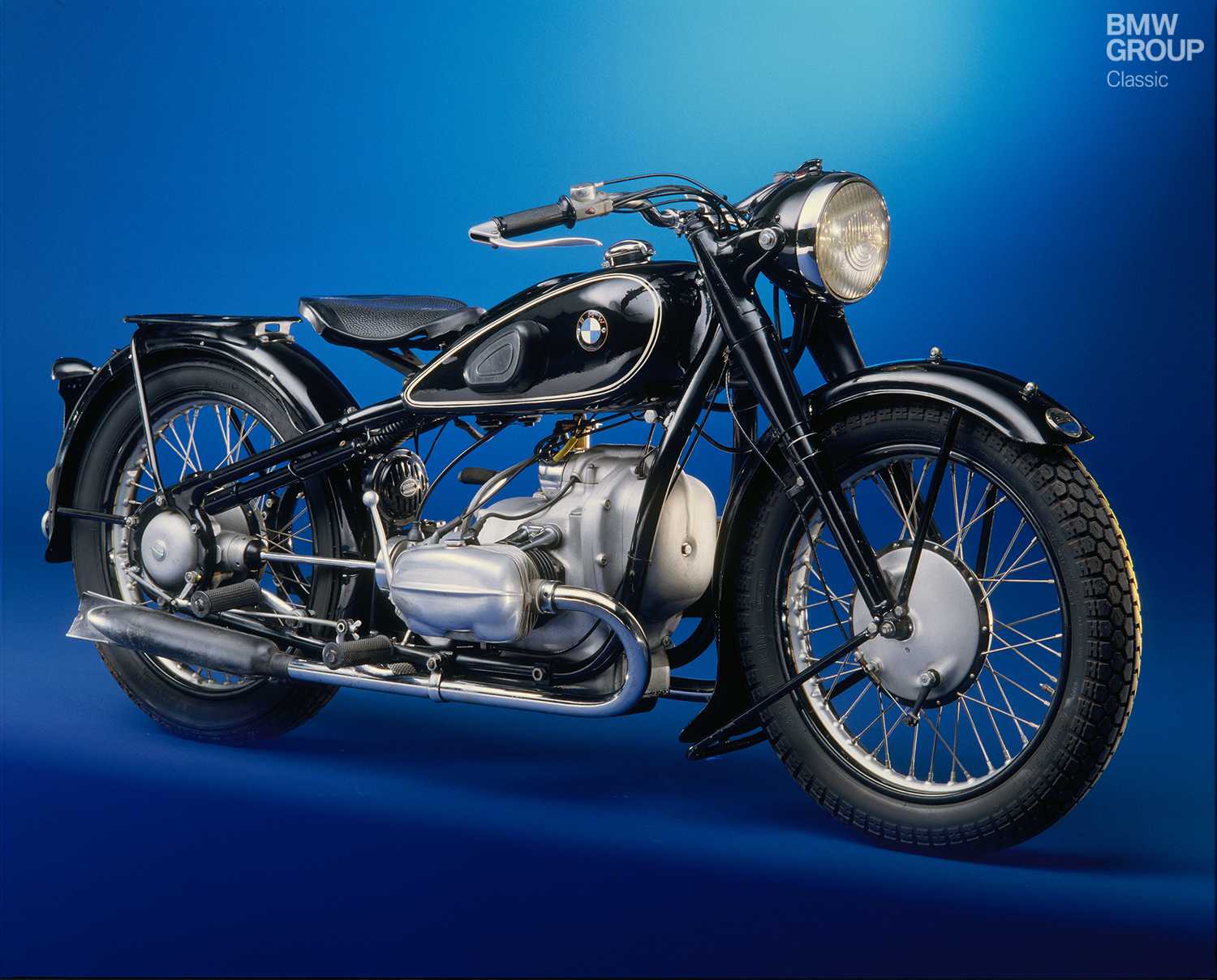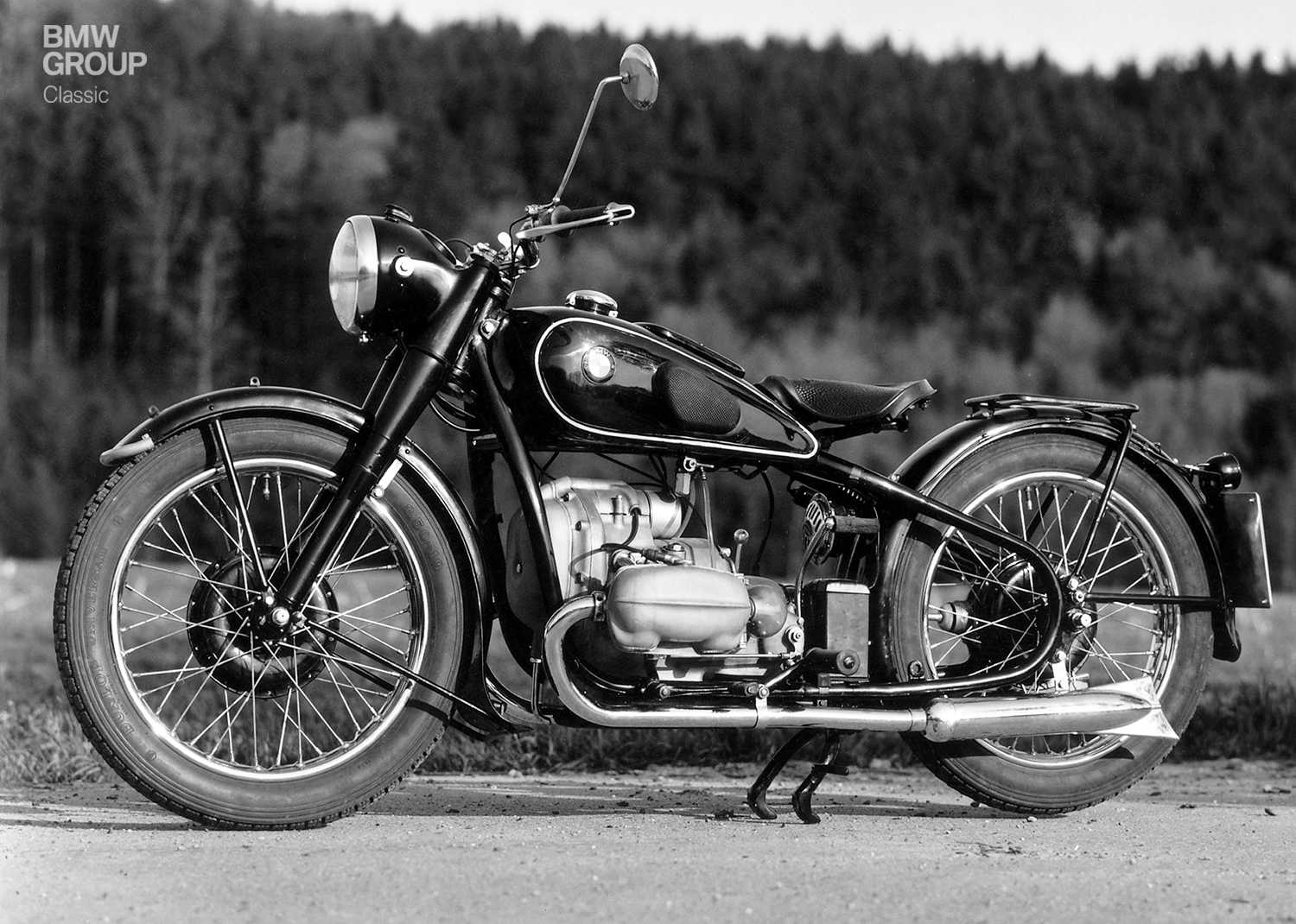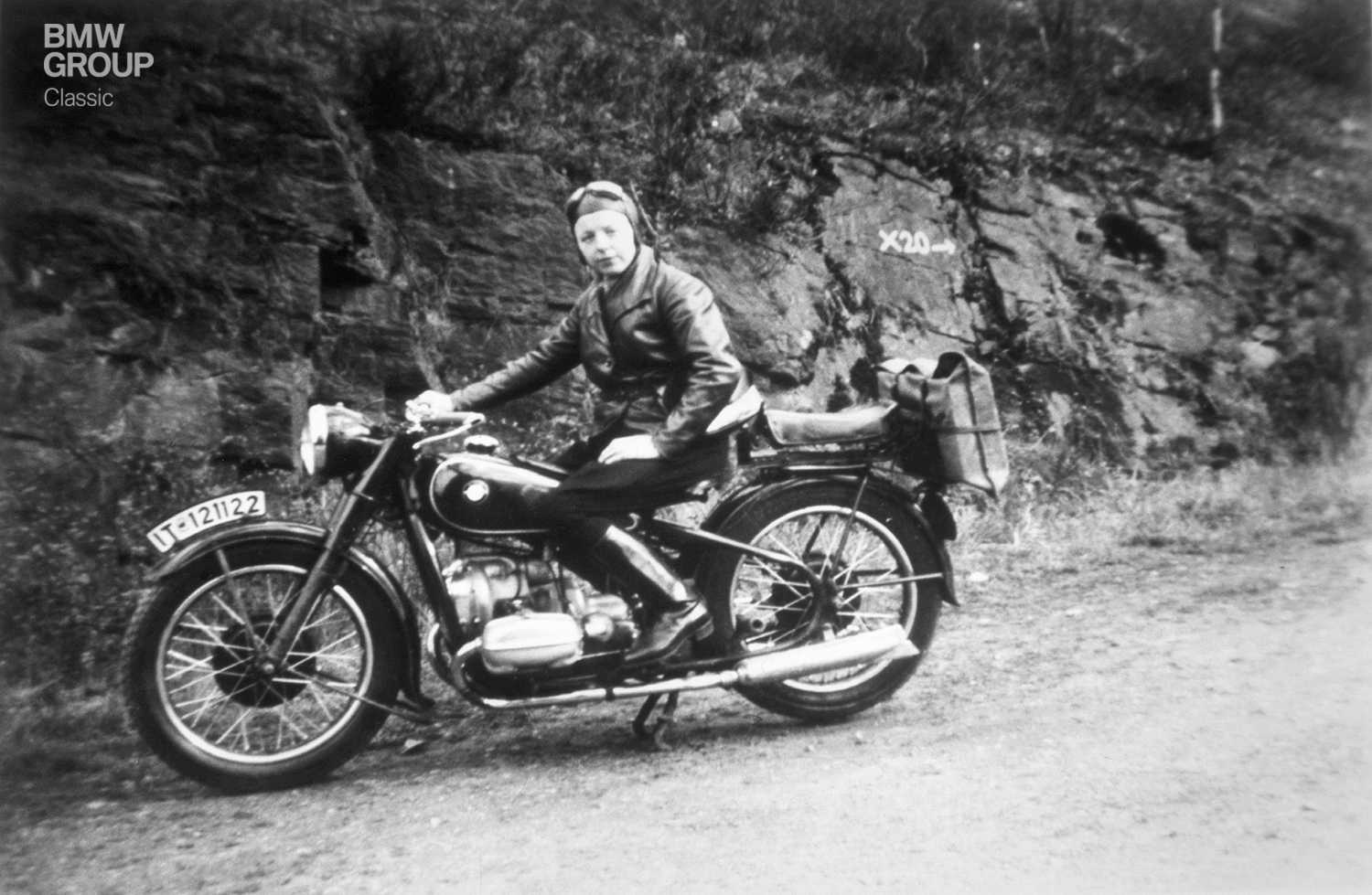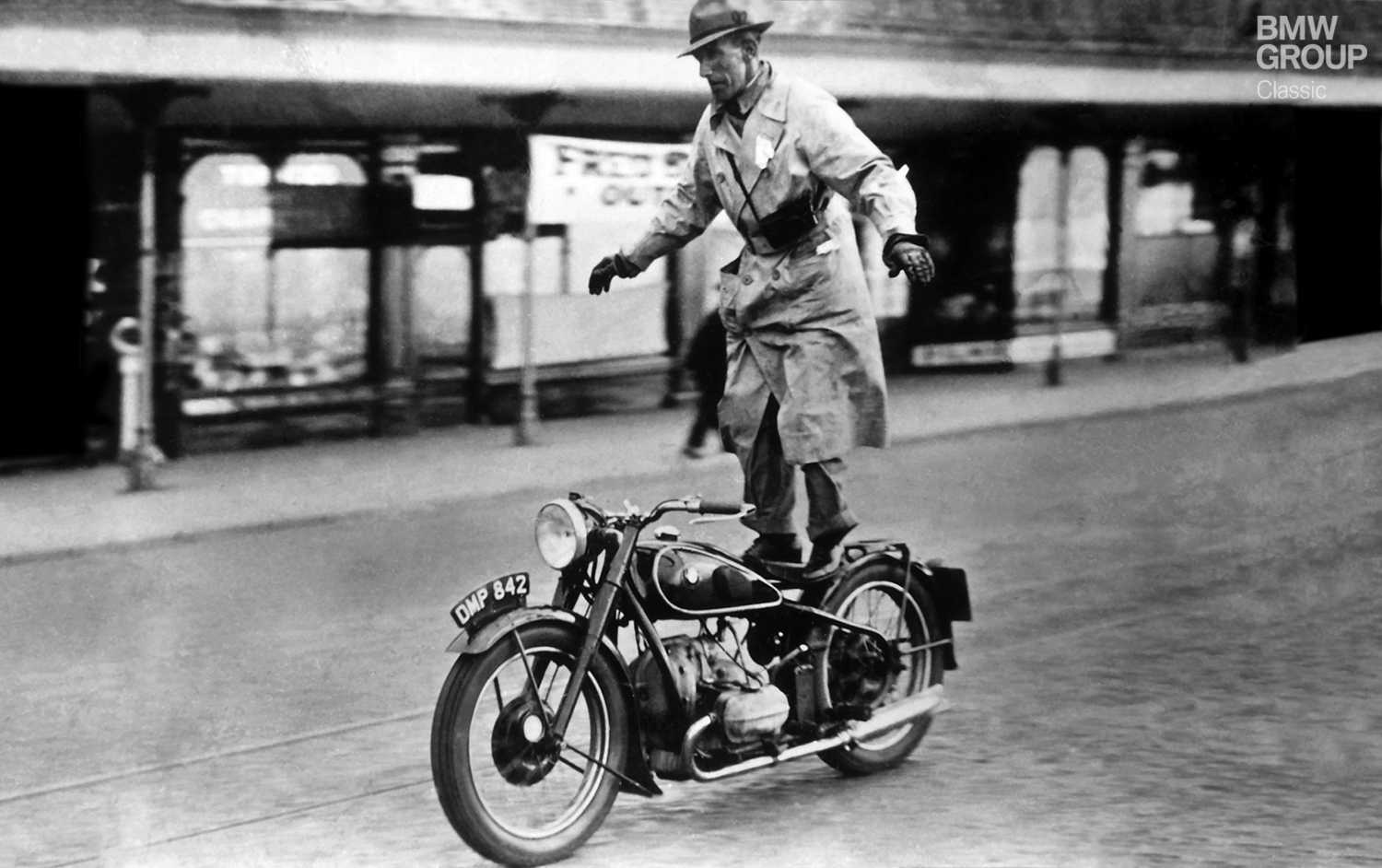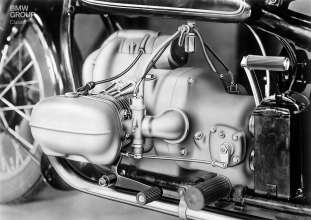The BMW R 5 was brought out in 1936 and broke the motorcycle mould in many respects. Its creator, Rudolf Schleicher, later referred to it as his most important design. With a sophisticated look whose defining elements included a double-cradle frame and a state-of-the-art telescopic fork, it already boasted some of the qualities of later generations of motorcycle and had a lasting stylistic influence.
There are so many things we simply take for granted nowadays without reflecting that, at some point in time, an ingenious designer must have come up with the idea for them. This also includes such basic stuff as the arrangement of switches and levers. Whereby it must be said that the simplest things are often the hardest to improve on – it’s only afterwards that everyone wonders why no-one had ever thought of doing it that way before. The gear-change on motorcycles is just one such example, as for many years it basically worked in the same way as the shift on a car: pull the clutch lever then operate the shifter by hand. However, the principle still in use in cars today had a major drawback when it came to motorcycles, as the rider had to let go of the handlebar to change gear. And if they happened to be cornering at the same time, the whole thing quickly turned into something of a balancing act.
I’ll lead the way – the new BMW R 5 from 1936.
The BMW R 5 was the first BMW motorcycle to feature a foot-operated four-speed gearbox. Riders could therefore leave their hands on the handlebar; they just had to train their left foot to get used to the new way of doing things. There was also a brand new electrically welded double-cradle frame made from tubular steel, which had been adapted directly from the works racing machine and offered excellent torsional stiffness. This combined with the hydraulically damped telescopic front fork to give the R 5 outstanding directional stability and roadholding, which was a highly refreshing tonic at a time when roads were often in a poor state – full of potholes, loose stones and bumps. The bike’s fleet-footed controllability was also down to its engine. The OHV boxer unit extracted 24 hp from its half-litre capacity, while only sports cars could rival its top speed of 135 km/h (84 mph) back then. The result was endless riding pleasure on Germany’s new autobahns.
A man with motorcycles in his blood – Rudolf Schleicher.
Motorcycles and their engineering were foremost in the mind of designer Rudolf Schleicher from an early age. He started racing shortly after the end of the First World War while studying mechanical engineering, and his exploits in the competitive arena put him very much in the shop window. BMW design chief Max Friz was one of those to spot the young man’s talents; Schleicher duly started work at BMW in 1923, and there was no holding him back. After getting series production of the very first BMW motorcycle, the R 32, up and running, the R 37 model designed by his own hand won the German Championship the very next year. His relentless quest for even better solutions helped to revolutionise motorcycle manufacture, as exemplified by the hydraulic telescopic fork for the front wheel. He even went so far as to call the R 5 his most important design. This was indeed a visionary machine; looking at it now, you’d swear it was from the 1950s, rather than the 30s.
A short time in production, but with a lasting impact.
Despite all this, the BMW R 5 was on sale for under two years. Only 2,652 had been built when production came to an end in 1937 to make way for a new and improved model already waiting in the wings: the R 51 with rear suspension.
The BMW R 5 carried a hefty price tag of 1,550 Reichsmarks – small-car money at that time – but attracted a devoted following nonetheless. One of its fans was the grandfather of Lord March, the landlord of the legendary Goodwood Motor Circuit. As well as a collection of cars and even an aeroplane, he also owned a motorcycle (an R 5) that you’d imagine he loved to lap around his home circuit. Decades later, his grandson stumbled across the bike purely by chance and was able to buy it back. Lord March proudly shows off the prodigal bike in the video below.
YouTube video tips for the BMW R 5:
Lord March, the host and organiser of the spectacular racing at Goodwood, presents the BMW R 5 once owned by his grandfather:
https://www.youtube.com/watch?v=asVO325-EGw
Presentation at the Concorso d’Eleganza Villa d’Este 2016 of a BMW R 5 barn find:
https://www.youtube.com/watch?v=uBQwfmjqzzc
And here’s a brief taste of what it feels like to ride a BMW R 5:
